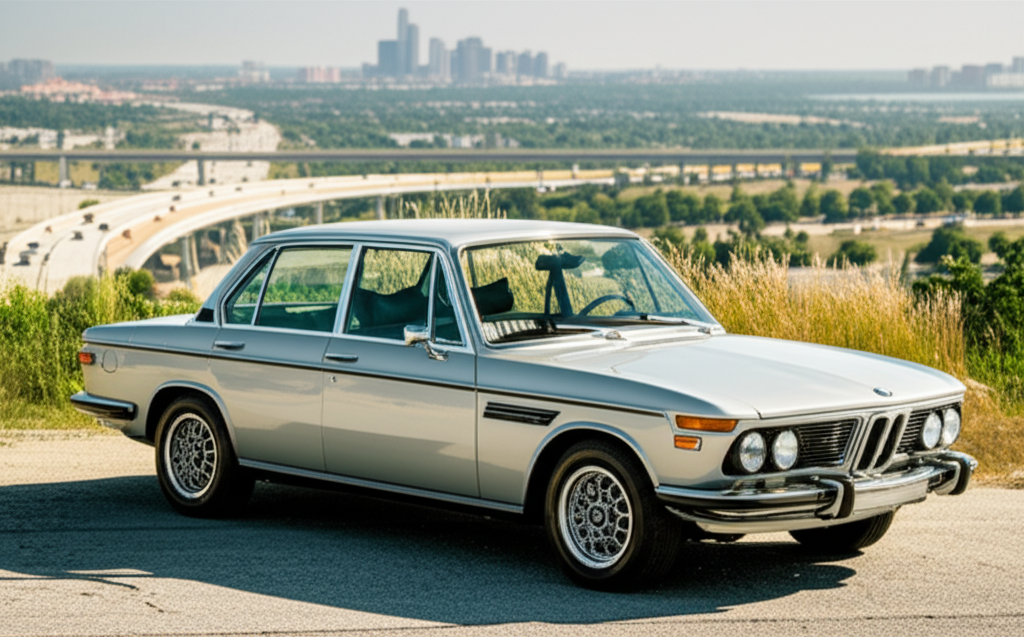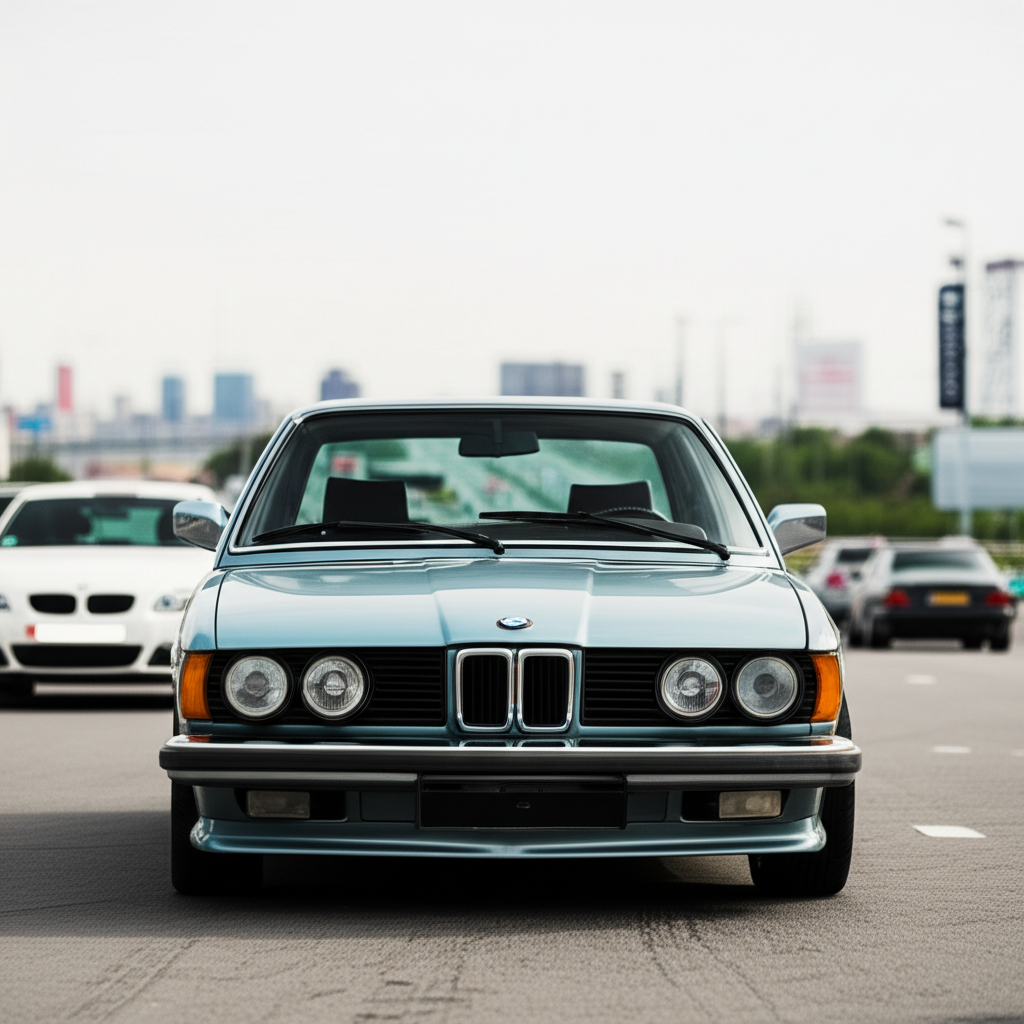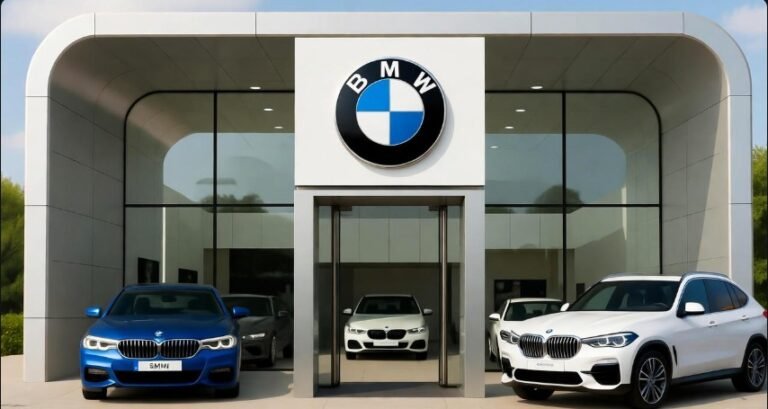BMW Old Models 2000: 7 Bold Facts

BMW Old Models 2000: 7 Bold Facts That Define Automotive Excellence
Here are the key takeaways for BMW old models from around 2000:
Discover iconic BMW models from the year 2000.
Explore their advanced engineering for their time.
Understand their lasting impact on luxury sedans and coupes.
Learn about their performance and driving dynamics.
Identify key features that set them apart.
Appreciate their enduring value and classic appeal.
The year 2000 was a significant time for automotive innovation, and BMW was at the forefront. If you’re curious about the legendary BMW old models from this era, you’re in the right place. These cars weren’t just modes of transportation; they were statements of engineering prowess and luxury. Navigating the specifics of older luxury vehicles can seem daunting, but we’re here to simplify it for you. Get ready to explore seven bold facts that make these BMWs true automotive icons. Let’s dive into what made these German machines so special.
BMW Old Models 2000: 7 Bold Facts You Must See
The turn of the millennium saw BMW solidify its reputation for blending performance with luxury. The BMW old models from around 2000 represent a peak in their design and engineering philosophy. These vehicles continue to captivate enthusiasts and collectors alike, offering a tangible link to a golden age of automotive craftsmanship. Understanding what makes these models so special involves looking beyond their classic good looks. It’s about appreciating the groundbreaking features and the philosophy that drove their creation.
1. The Iconic E46 3 Series: A Driving Enthusiast’s Dream
The BMW 3 Series from the late 1990s and early 2000s, specifically the E46 generation (produced from 1998 to 2006), is often hailed as one of the best driving cars ever made. For the year 2000 models, this generation offered a perfect balance of sportiness, comfort, and everyday usability. You could find models like the 323i, 328i, and the highly sought-after M3. The E46’s chassis was renowned for its superior handling and responsive steering, providing a connected feel to the road that many modern cars struggle to replicate. Its rear-wheel-drive platform, coupled with an almost perfect weight distribution, made it a joy to drive on winding roads.
Engine Options and Performance
The E46 generation offered a range of inline-six engines known for their smoothness and power. For the 2000 model year, popular choices included:
- 323i: Featuring a 2.5-liter engine producing around 170 horsepower.
- 328i: Equipped with a 2.8-liter engine delivering approximately 190 horsepower.
- M3 (later in the generation): The E46 M3, introduced in 2000 for the 2001 model year, boasted a 3.2-liter S54 inline-six engine generating a phenomenal 333 horsepower.
These engines were paired with either a 5-speed manual, 5-speed Steptronic automatic, or a 6-speed manual transmission in the M3. This versatility allowed buyers to choose the driving experience that best suited them, from a comfortable cruiser to a track-ready machine. The E46’s engineering was so well-regarded that it continues to be a benchmark for compact luxury sports sedans.
2. The Majestic E39 5 Series: The Pinnacle of Luxury Sedans
The E39 generation of the BMW 5 Series (produced from 1995 to 2003) represented the zenith of mid-size luxury sedans for its time. Models from 2000, such as the 528i and 540i, offered an unparalleled combination of sophisticated design, refined interiors, and potent performance. These cars were engineered for comfort on long journeys while still delivering the engaging driving dynamics BMW is famous for. The E39’s exterior styling was elegant and understated, a design that has aged remarkably well. Inside, occupants were treated to high-quality materials, intuitive ergonomics, and advanced features for the era.
Technological Advancements in the E39
BMW equipped the E39 5 Series with technology that was cutting-edge for the year 2000. Key features included:
- BMW iDrive: While its early iterations were sometimes criticized, the E39 was one of the first BMWs to receive the precursor to the iDrive system, aiming to centralize control of infotainment and vehicle functions.
- Xenon Headlights: Offering superior illumination compared to traditional halogen lamps.
- On-board Computer: Providing detailed information about fuel consumption, range, and vehicle status.
- Navigation System: An option that was a significant luxury at the time.
The E39 5 Series was also praised for its excellent safety features, including multiple airbags and advanced braking systems like ABS and Dynamic Stability Control (DSC), which you can learn more about on the National Highway Traffic Safety Administration (NHTSA) website. The E39’s blend of luxury, technology, and driving pleasure cemented its status as a benchmark in its class.
3. The Bold E53 X5: Revolutionizing the SAV Segment
The year 2000 marked a pivotal moment for BMW with the introduction of the X5. This marked BMW’s entry into the burgeoning sport utility vehicle market, though BMW preferred to call it a “Sport Activity Vehicle” (SAV) to emphasize its on-road driving dynamics over traditional off-road ruggedness. The E53 X5 (produced from 1999 to 2006) was built on a car-like chassis, borrowing heavily from the E39 5 Series, particularly in its suspension and handling characteristics. This made the X5 feel more like a taller, more versatile 5 Series than a typical truck-based SUV.
Key Features of the E53 X5
The first-generation X5 was designed to offer luxury, performance, and practicality. Its standout features for the year 2000 and beyond included:
- All-Wheel Drive (xDrive): BMW’s intelligent xDrive system provided excellent traction and stability in various road conditions.
- Powerful Engines: Early models offered robust V8 engines (like the 4.4i) and capable inline-six options (3.0i), delivering strong performance.
- Spacious Interior: It could comfortably seat five adults and offered ample cargo space, making it ideal for families and active lifestyles.
- Advanced Vehicle Dynamics: Features like Hill Descent Control and a sophisticated suspension system contributed to its refined driving experience.
The E53 X5 successfully blended SUV versatility with BMW’s signature driving pleasure, paving the way for future luxury SUVs and establishing BMW as a major player in this segment.
4. Sophisticated Z8 Roadster: A Modern Classic Gem
The BMW Z8, produced from 2000 to 2003, is an undisputed automotive icon. This roadster was a revival of the classic BMW 507, boasting a stunning design and immense performance. Designed by Henrik Fisker, the Z8’s design language was pure retro-futurism, featuring clean lines, a long hood, and a low-slung profile. It was more than just a pretty face; the Z8 was built using advanced construction techniques, including an aluminum spaceframe chassis with body panels made of the same material. This contributed to its relatively light weight and excellent rigidity.
Performance and Engineering Marvel
Underneath its gorgeous exterior, the Z8 packed a serious punch. It was powered by BMW’s legendary 4.9-liter S62 V8 engine, borrowed from the E39 M5. This powerplant produced 394 horsepower and 440 Nm of torque, making it one of the most powerful naturally aspirated V8s of its time.
Here’s a quick look at its performance figures:
| Specification | BMW Z8 (2000) |
|---|---|
| Engine | 4.9L Naturally Aspirated V8 (S62) |
| Horsepower | 394 hp @ 6,600 rpm |
| Torque | 440 Nm @ 3,800 rpm |
| Transmission | 6-speed Manual |
| 0-60 mph | Approx. 4.2 seconds |
| Top Speed (Limited) | 155 mph (250 km/h) |
The Z8 was exclusively offered with a 6-speed manual transmission, reinforcing its status as a driver’s car. Its limited production numbers and unique design have made the Z8 a highly sought-after collector’s item, representing a pinnacle of BMW design and engineering from the year 2000.
5. The Compact Powerhouse: BMW 3 Series Compact (E36/5 and E46/5)
While the E36 3 Series Compact had been around since the mid-90s, its evolution continued into the early 2000s. BMW also introduced the first E46 3 Series Compact (E46/5) in 2000. These compact models offered a more affordable entry point into the BMW brand, retaining the driving dynamics that BMW owners expected, albeit in a smaller package. They featured shorter wheelbases and distinctive styling, often seen as a more youthful and agile alternative to their larger sedan siblings.
What Made the Compact Unique?
The strategy behind the Compact models was to attract younger buyers and those looking for a more nimble BMW. Key characteristics included:
- Rear-wheel drive platform: Despite its compact size, it maintained BMW’s signature RWD layout for sporty handling.
- Efficient engines: Typically equipped with smaller displacement inline-four engines, offering a good balance of performance and fuel economy.
- Practicality: The hatchback-style rear provided more cargo versatility than a traditional sedan.
- Affordability: They were positioned as a more accessible BMW, though still offering premium quality.
These models, though sometimes overlooked, were crucial in expanding BMW’s market reach and introducing a new generation of drivers to the brand’s driving pleasure.
6. Advanced Engine Technology: Inline-Six Serenity
A hallmark of BMW old models from 2000 was their sophisticated inline-six engines. These engines were celebrated for their inherent balance, which resulted in exceptionally smooth operation and a distinct, pleasing sound. BMW’s engineering prowess in this area was unmatched. For instance, the M54 engine family, introduced around this time and found in models like the E46 3 Series and E39 5 Series, was a significant evolution. These engines featured advancements like aluminum blocks, double VANOS (variable valve timing on both intake and exhaust camshafts), and electronic throttle control.
The Benefits of BMW’s Inline-Six
The popularity of these engines wasn’t just about power; it was about the overall experience:
- Smoothness: Unmatched vibration-free operation, creating a refined driving experience.
- Power Delivery: Linear and responsive acceleration, making them feel lively at all RPMs.
- Sound: A distinctive, sporty exhaust note that became synonymous with BMW performance.
- Durability: Known for their longevity and reliability when properly maintained.
These engines weren’t just mechanically sound; they were an integral part of the driving pleasure that defined BMW.
7. Enduring Value and Collector Appeal
Today, BMW old models from the year 2000 are increasingly recognized for their enduring value and collector appeal. Unlike some mass-produced vehicles that depreciate rapidly, well-maintained examples of these BMWs have held their value remarkably well. This is due to several factors: their timeless design, superior engineering, engaging driving experience, and the growing nostalgia for a period when automotive technology felt more analog and connected. Enthusiasts appreciate the build quality and driver-focused nature of these cars.
Factors Contributing to Their Value
Several elements make these BMWs desirable in the used car market:
- Timeless Design: Many of these models, like the E46 3 Series and E39 5 Series, are considered modern classics with designs that still look contemporary.
- Driving Dynamics: The inherent joy of driving a BMW from this era is a major draw for enthusiasts.
- Build Quality: They were built with high-quality materials and robust engineering, contributing to their longevity.
- Performance Heritage: Models like the E46 M3 have established performance credentials that command respect.
- Maintenance Accessibility: While repairs can be costly, parts are generally available, and many independent mechanics specialize in BMWs. For official maintenance schedules and recalls, the NHTSA website is a crucial resource.
As the automotive landscape shifts towards electric vehicles and autonomous driving, the analog charm and mechanical purity of BMW old models from 2000 make them increasingly attractive to a new generation of drivers and collectors seeking an authentic driving experience.
Pro Tip: When considering a BMW old model from the year 2000, always prioritize vehicles with a complete maintenance history. This is crucial for assessing their condition and potential future repair costs.
Frequently Asked Questions About BMW Old Models 2000

Q1: Are BMW old models from 2000 reliable for daily driving?
Many BMW old models from 2000 can be reliable daily drivers if they have been meticulously maintained. Due to their age, regular and consistent maintenance is paramount. It’s advisable to have a pre-purchase inspection by a BMW specialist to identify any potential issues. Older luxury cars often require more attention than newer, simpler vehicles.
Q2: What is the average cost of maintenance for a BMW from the year 2000?
Maintenance costs can vary significantly depending on the model, the specific repairs needed, and where you get your car serviced. Parts for BMWs can be more expensive than for mainstream brands. Regular maintenance, such as oil changes and filter replacements, might be comparable, but unexpected repairs or specialized components can increase costs. Independent BMW specialists often offer more competitive pricing than dealerships.
Q3: Which BMW old model from 2000 is best for a beginner enthusiast?
For a beginner enthusiast, the E46 3 Series (e.g., 323i, 325i, 328i) is often recommended. It provides an excellent introduction to BMW driving dynamics, is relatively straightforward to maintain compared to more complex models, and parts are widely available. Avoid the M3 as a first car due to its higher performance and maintenance costs, unless you have extensive experience and a substantial budget.
Q4: What are common issues to look for in a BMW E46 from 2000?
Common issues for the E46 generation include potential oil leaks from the valve cover gasket and oil pan gasket, coolant system failures (e.g., plastic expansion tank, water pump, thermostat), and subframe mounting point fatigue. For models with automatic transmissions, check for smooth shifting. The VANOS system can also require attention over time.
Q5: Where can I find parts for BMW old models from 2000?
Parts are available from several sources. Official BMW dealerships will have genuine parts, though they are typically the most expensive. Aftermarket parts suppliers, both online and at local auto parts stores, offer a wide range of options at various price points. Websites specializing in BMW parts, as well as used parts from salvage yards, are also good resources.
Q6: Are these older BMWs good investments?
Certain BMW old models from 2000, particularly low-mileage, well-maintained examples of performance variants like the E46 M3 or the Z8, are considered appreciating assets and good investments. However, most standard models are more about enjoying a classic driving experience at a reasonable price point rather than expecting a significant financial return, though they do tend to hold their value better than many contemporaries.
Q7: How do I ensure my older BMW is safe to drive?
Safety is paramount. Regularly inspect tires for wear and proper inflation. Check brakes for pad and rotor condition, and ensure fluid levels are correct. Verify that all lights, turn signals, and wipers are functioning correctly. Modern safety technologies like ABS and DSC were available and should be checked for proper operation. If you’re unsure, consult a qualified mechanic or refer to official BMW service bulletins referenced on sites like NHTSA.
Conclusion
The BMW old models from the year 2000 represent a golden era of automotive engineering and design. From the driver-focused E46 3 Series to the luxurious E39 5 Series, the groundbreaking E53 X5, and the stunning Z8 roadster, these vehicles continue to captivate with their performance, quality, and timeless appeal. Their advanced inline-six engines and robust construction have cemented their status as modern classics. While they require diligent maintenance, the rewarding driving experience and enduring value make them an attractive proposition for enthusiasts and collectors alike. Exploring these iconic machines offers a fascinating glimpse into how BMW shaped the automotive landscape at the turn of the millennium.


